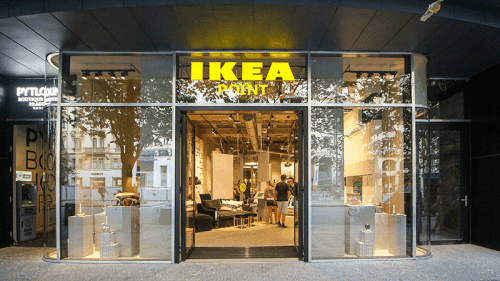Developers are under more pressure than ever to include features in their buildings that are good for the environment, good for their workers,and good for the surrounding community.
“There is an increased urge for sustainability in the built environment,” said Elizabeth Dunn, vice president of global customer solutions for Prologis, who moderated a panel at the 2019 ULI Fall Meeting on the potential in industrial spaces for sustainability, social equity, and workforce development.
Strong Demand for Industrial
Developers have been given this mandate just as they plan to build a huge number of new warehouse projects. “There are 200 million square feet [19 million sq m] of warehouse space under construction right now,” said Dunn.
The rise of e-commerce has created a massive need for warehouse space that is likely to continue even if the U.S. economy slows. That means a new generation of warehouse spaces needs to be built, often with different specifications for floor depths, ceiling heights, and parking and trailer storage to accommodate the needs of retailers that ship products to individual customers. Developers are under pressure to build these projects sustainably.
“The demands from our investors have gotten increasingly robust,” said Bohdy Hedgcock, senior vice president and assistant portfolio manager for Clarion Partners. “Every request for proposals that we get from an investor today has a sustainability component to it.” To attract these investors, Clarion meets standards set by organizations like Global Real Estate Sustainability Benchmark and Fitwel.
“There is a natural business case here,” said Dunn. “We can actually help our customers improve productivity. We can help save them costs on energy, on lighting, and through solar. That helps create value for our customer, which helps us create value for our investors.”
Developers include features such as light fixtures that save energy and skylights that let more natural light into the warehouse space. “Our buildings are all LEED certifiable,” said Hedgcock, meaning they include all the features necessary to earn a Leadership in Energy and Environmental Design certification, though Clarion does not spend the $40,000 necessary to actually be inspected and certified. “We don’t think we are losing out of leasing decisions because we are not LEED certified,” Hedgcock said.
Developers Build Their Labor Force
Warehouse developers are also creating programs to train potential warehouse workers and improve the quality of the workplace.
“It’s a war for talent,” said Chris Whalen, assistant vice president of financial analysis for Duke Realty. “Operators want to create incentives for workers.”
Prologis has spent its own money to partner with nonprofit organizations to provide internships and train potential young workers in cities like Los Angeles, Miami, and Chicago. “We think it’s essential to help our customers grow where opportunities are growing,” said Dunn.
Other developers, including Duke, build warehouses with large break areas, stand-alone recruiting offices, on-site bus stops, on-site daycare, and other features designed to attract workers. “It’s a good deal for us, because it’s going to be a good warehouse and it is going to stay leased,” said Whalen.
See presentations from this 2019 ULI Fall Meeting event. Explore valuable programming and content from past ULI events on Knowledge Finder.





